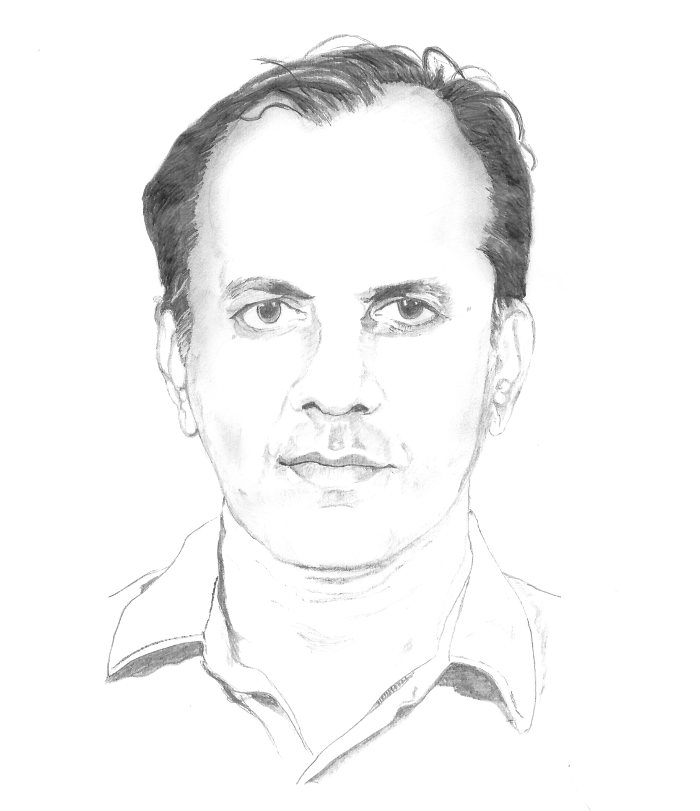
C.S. Seshadri is one of India’s most eminent mathematicians. His deep insights and significant accomplishments have greatly contributed to shaping India as a major centre for mathematics in the post-independence era, particularly in the field of algebraic geometry. Another topic which he virtually engendered, is the so-called Standard Monomial Theory. His work in establishing the Chennai Mathematical Institute (CMI), literally brick by brick, is as noteworthy as his scientific pursuits.
In a conversation with Bhāvanā, Seshadri spoke about his life, his mathematical career spanning more than six decades, and his other big love, music.
We would like to begin by talking about your family and upbringing. Has your family always been in Tamil Nadu?
CSS: I was born on 29 February 1932 in Kanchipuram, where both my father and mother come from. They hail from villages near Kanchipuram; my father’s family was from a village called Keenur. It is said that my namesake, my paternal great grandfather, bought a house in the Sannidhi street near the well-known Varadarajar temple in Kanchipuram, presumably to impart a modern education to his sons. This house is our ancestral home, and has maintained this character for a long time. In my own generation, its ownership has passed on to my father’s brother.

We are a Shree Vaishnavite Brahmin family. My father was educated at Pachaiyappa’s school in Kanchipuram, and went on to study at the Presidency College, Chennai (known as Madras in those days). My paternal grandfather was a lawyer but he never practised. My grandfather’s brother was also a well-known criminal lawyer in Chennai in those days. So it was a lawyer’s family and since Chengalpet was the district headquarters at that time, my father moved there to practice law. All my childhood and school days were spent in Chengalpet. All my schooling was at St. Joseph’s school except for an interval of three years at the Ramakrishna school, but I finally passed out from St. Joseph’s school.
As for our family, we were eleven children–-I am the oldest and my youngest sibling is C.S. Rajan, who is also incidentally a mathematician.
Is that Professor C.S. Rajan of TIFR, Mumbai?
CSS: Yes. And the difference in age is 29 years. We are eight brothers and three sisters. In very recent years, unfortunately two of my brothers passed away.
Were there any significant influences during your early formative years that have helped you develop a love for numbers, or shapes, or in things that could generally be associated with mathematics?
CSS: In school I used to be good at many things including mathematics, although initially mathematics had no particular attraction for me.
The significant influence though came from outside school, at home. One of my uncles (husband of my father’s sister) by the name of T.A. Rangaswamy, was a very interesting person. But he also had an unfortunate career. He was a brilliant man, who did his Chemistry Honours at Presidency College, and went on to do research in Bangalore at the Indian Institute of Science. Apparently, owing to some health issues, he had a sort of a mental breakdown. Thereafter he would stay with my aunt at our ancestral house in Kanchipuram. He was a lonely figure at home, and children used to be afraid to interact with him. And then one day, when I was (I think), in second form (that is, today’s seventh standard), it so happened that he called me out, and began to talk to me about mathematics, asking me questions like, “Can you solve this problem?” He apparently was also pleased by my answers. This was the start of a wonderful relationship.
He had studied Chemistry Honours, but we used to do mathematics together, which of course was not very advanced. I used to solve the so-called “Geometry Riders”–-intricate problems in plane Euclidean geometry. We used to talk about literature, chemistry and many other things.
Would he pose specific problems to you, or did he perhaps tell you stories about mathematicians?
CSS: He wouldn’t pose me any particular problem as such, or even teach mathematics–-actually we used to almost compete with each other in solving riders. We had a bureau in that house containing a collection of books belonging to my grandfather, which included books by Dickens, Walter Scott, etc. I read some of these books. My uncle once even narrated to me the entire story of The Count of Monte Cristo by Alexandre Dumas. He knew more about chemists actually, and hence didn’t talk much about mathematicians. I used to spend a considerable part of my vacation periods with him. This period was the starting point for my deep involvement in mathematics.
I recall a statement here by André Weil, where he says that the ages between twelve and sixteen or so in a child’s life are when strong influences on their minds can occur, and it happened to me exactly that way. Even after all the research that I have done, I still feel that the excitement I had felt solving a geometry rider with my uncle, was as great as anything else I have done much later.
I still feel that the excitement I had felt solving a geometry rider with my uncle, was as great as anything else I have done much later
What was the general outlook or worldview in your family? Was it religious, or conservative, or perhaps even cosmopolitan?
CSS: Apart from some mild formalities that were observed since we are Brahmins, there was no excessive religiosity or compulsion, nothing at all. My father was always immersed in his work and he gave us a lot of independence. I was closer to my mother and used to talk to her a lot. It was not an orthodox home for sure, but that did not mean that we were cosmopolitan either. We were fairly well-off, but there was no ostentation, and we lived like any other Brahmin family of the day, and without the orthodoxy.
Since you spoke of a Brahmin family, did you go through the upanayanam, the sacred thread ceremony?
CSS: Yes, that was an interesting event. I had my upanayanam after I finished my college studies, and that was the first big ceremonial event in my family. Several relatives were invited for the occasion. Just around the day of the ceremony, I got the letter for an interview from the Tata Institute [TIFR]. I had to leave for Bombay, even without fully going through the religious ceremonies, to be in time for the interview at TIFR.
We know that you are very passionate about music, Carnatic music in particular. Has music always run in your family?
CSS: We have been very much interested in music, as a family, for generations. My maternal grandmother (born in 1899) was around ten or twelve years old when she began learning music from the great Kanchipuram Naina Pillai. Pillai is famous for bringing out a great number of Thyagaraja compositions. My grandmother also learnt from one Puducherry Rangaswamy Iyer, who was very highly regarded, but who sadly died young. My grandmother had a well-grounded training and sang beautifully. She could have had a very successful career as a musician.
My own mother was passionate about music, though she had very little of formal training. My father was not particularly interested in music, but his brother, with whom we were very close, was. He would even imitate the great masters with all their idiosyncrasies. So, music runs strongly in our family. This continued even after my marriage to Sundari.
So mathematics came to you via an uncle, but music ancestrally. Also, your family itself has always been musically very aware. Is that correct?
CSS: Yes. Tremendously aware.
From what age did you start learning music?
CSS: In those days, boys, apart from those hailing from professional musical families, would rarely get formally trained in music. It was not the custom. I used to listen to a lot of music on the radio. There was no radio for quite some time in my own house, and I used to listen to it at one of my neighbours. One of my sisters was learning music as it was almost customary for girls, especially from Brahmin families, to learn music. Basically, I was imbibing music simply by listening keenly. In the course of time I could sing rāgas, even some fairly complicated ones, reasonably well.
Even after joining TIFR, this process continued by going to concerts, and I could be usually found mostly singing to myself. One of my friends at TIFR by the name P.N. Krishnamoorthy once told me, “You seem to be so much interested in music. I have my uncle here in Bombay, a professional musician who can teach you music.” So I started learning from his uncle Pallavur Mani Iyer. This was in 1956, when I was 24 years old. I left for Paris towards the end of 1957, and returned in 1960. I continued to learn from him for around two years. So my formal grounding in music happened in Mumbai.
If it had not been for math, would you have been a musician?
CSS: This statement was probably spread by me [laughs]. In a practical sense, the answer is no. My technical training started at the age of 24, which is just too old for a professional career in music. Besides, during the initial period of training itself, I was becoming an established mathematician. Probably this statement was made by me to convey my deep commitment to both mathematics and music.
Music is also not an easy game, as it calls for early commitment and complete surrender.
Do you see any parallels between the pursuit of aesthetics in mathematics and music?
CSS: I don’t see any deep parallels in the pursuit of mathematics and music. Probably this question arises because of the oft-quoted statement that mathematics is both an art as well as a science. For me, music is a “transcendental” experience. When I sing, I am totally lost. Some persons would call it a spiritual experience. I am though very wary of using such phrases.
For me, music is a “transcendental” experience
Mathematics is an intellectual pursuit. When working on a problem, you struggle and then suddenly everything falls in place, and which certainly in itself constitutes a unique mental experience. One also talks of “taste” in mathematics using a terminology from the arts. Mathematics, being basically a science, makes it tricky for such definitions from the humanities to apply to it, as its practice and appreciation is hardly as subjective as in the arts. But I can say that it is only in music that I experience something that is truly “transcendental”.
You were born in 1932, just twelve years after Srinivasa Ramanujan had passed away. By then, he was a mathematician known the world over. When did you first hear about Ramanujan?
CSS: Ramanujan was indeed a household name. I must have heard of him at a very early age. Certainly for the whole generation, he was an inspiring figure.
Did you at any point of time tell yourself that here is the man whom I would want to emulate?
CSS: I would not like to use the word “emulate”. He was and continues to be a very inspiring figure. For me it is like this: If you like mathematics deeply, and feel that you have a talent for it, you pursue it. It is very likely that you will prove some good results, and only time will tell you its true worth.
When you moved to Loyola College in Madras, you met Father Racine. And Fr. Racine was a student of Élie Cartan, and is supposed to have had a very strong influence on your mathematical upbringing. Your thoughts on this.
CSS: Fr. Racine taught us a course in Algebra in Math Honours following a book by Van der Waerden published in the 1930s, titled Modern Algebra. This was a very influential and pioneering book. With the exception of F.W. Levi in Kolkata, Fr. Racine was the only person in India to teach such a course at that time. I took the Honours Course during the academic years 1950–53. Fr. Racine could not actually be called a great teacher in the usual sense. However, he had a knack of identifying and nurturing good students and keeping in touch with them even after they finished college. I remember that he gave me a textbook by Stefan Banach on Classical Mechanics to read. I don’t think that I benefited much from it. He also lent me a book of Schreier and Sperner1 to solve problems from the book. I was quite successful in this endeavour, and it gave me a lot of confidence.
The influence of Fr. Racine therefore lay not in his direct teaching, but in creating an awareness of what is important, and later encouraging us to pursue it. I would say that in those days, undergraduate education was quite good in many colleges.
I still remember that when I was studying in the Honours course, K. Chandrasekaran (KC) visited Loyola College at the invitation of Fr. Racine. KC gave a talk on TIFR, which had then been founded only a few years earlier. The idea presumably was to invite talented students to join TIFR for pursuing research. In fact Fr. Racine advised me to apply to TIFR. Loyola College had a high reputation and there were many good teachers, and mathematics had a special place. There was an excellent teacher, V. Krishnamurthy, who taught us mathematical analysis and complex variables. There was also a teacher by the name of S. Narayanan who was very good in teaching intermediate classes (now called 11th and 12th standards). He encouraged me a lot.
At that time several students used to get full marks in mathematics in the final intermediate examination, conducted by the university. The examination was rather easy and didn’t really test one’s mathematical ability. There was a special examination in mathematics at Loyola College though which was comparatively quite difficult, and the person who got the first place in each section (Intermediate class was divided into three sections) was awarded a prize called the Fr. Racine prize. M.S. Narasimhan and I got these prizes, as we were then studying in different sections, but in the same academic year.
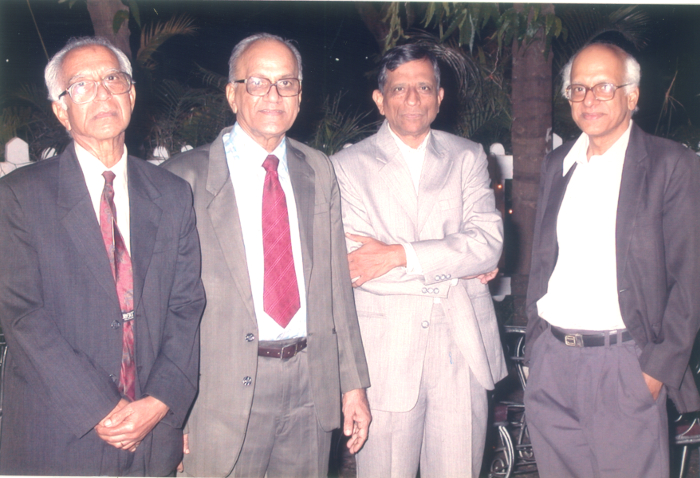
Narasimhan and I didn’t talk much mathematics when we were in college. Our close friendship started when we joined TIFR
At around the same time, a very important friendship that has lasted nearly sixty years to date presumably began. Your friendship with Prof. M.S. Narasimhan has been crucial in its lasting influence on mathematics research in India, and the year 2015 was the fiftieth year of the Narasimhan–Seshadri theorem. When did you first meet him?
CSS: I first met M.S. Narasimhan in 1948 when we both joined the Intermediate class in Loyola College that year.
Were you both in the same academic year?
CSS: Yes. We were together in Loyola College, first in Intermediate for two years, and then in the Honours course for three years.
Did the two of you talk about mathematics back then in Loyola?
CSS: We didn’t talk much mathematics when we were in college. Our close friendship started when we joined TIFR and we have had a wonderful time discussing mathematics and many other things.
The mood at TIFR was that something important was happening
M.S. Narasimhan once recalled an incident that happened while playing cricket with you. Coincidentally, you were the batsman and he was the non-striker, and apparently the ball hit your teeth and you even started to bleed!
CSS: Yes. We had a cricket team and we used to play on those really uneven grounds. We were just ordinary players. There was a classmate of ours by name Sethuraman, who was considered the fastest bowler in our team. Once when I was batting he knocked me on my face with a fast bouncer. I started bleeding and a tooth came out. Accompanied by all my teammates, I went to the nursing home at the college and got treated. Fortunately, nothing serious had happened and I started playing from the very next day.
Incidentally, Sethuraman’s father, Narayanaswamy Iyer, was an Accountant General. He was fond of mathematics and even knew mathematicians like S.S. Pillai and T. Vijayaraghavan, whom he probably had met in Dacca [now Dhaka, Bangladesh]. When we were in Honours class (and I think it was the first year), Sethuraman brought a mathematics question set by S.S. Pillai for us to solve.
Another interesting incident too comes to my mind. When we were in first year Honours, Fr. Racine would take “moral classes” for us. Nothing happened during these classes. Fr. Racine would be working in his seat and all of us would keep chatting. One day all of a sudden, he began to talk about S.S. Pillai, and that Pillai was killed in an air crash, and asked us all to observe a minute’s silence.
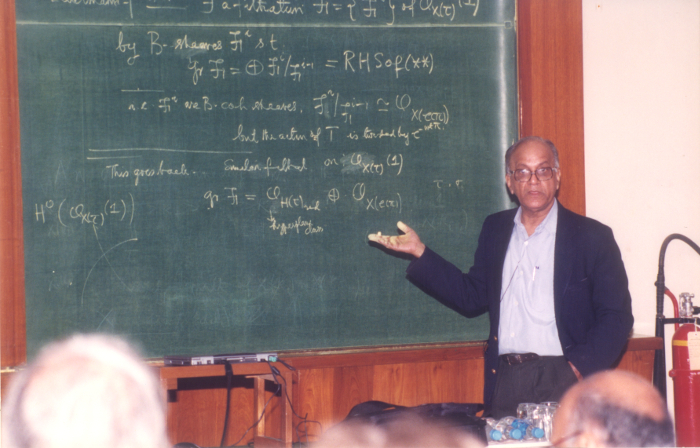
Did you and Narasimhan travel to Mumbai together, when you both first went to TIFR?
CSS: No. We didn’t travel together. But when we arrived in TIFR, we found that accommodation was not available at the hostel. Fortunately I found a solution. The person who founded the Fanaswadi Sri Balaji temple in Mumbai was known to my family, as we lived in adjacent houses in Kanchipuram. So, Narasimhan and I stayed for one month in the living quarters inside the temple complex. We used to wake up and take bath early every morning, then go to TIFR, and be back late at night.
What was the general mood in TIFR then, particularly in the School of Mathematics? Homi Bhabha had just then brought in KC from the Institute for Advanced Studies, and there was presumably a lot of activity there.
CSS: The mood, I would say, was that something important was happening.
You could sense that?
CSS: Yes. Even though the atmosphere could have been intimidating for some, and one could find fault with some decisions of the senior faculty. There was also a feeling of uniqueness about the TIFR School of Mathematics. Initially it gave us a sense of pride. However, in the course of time it did not appeal to me.

What exactly do you mean by that?
CSS: I mean that there should have been institutions of comparable stature, with healthy competition between them. But for the Indian Statistical Institute at Kolkata, there was no such comparable institution in India. It was not a nice feeling that we had only two places of true excellence in mathematics in India.
But I should stress too, upon the positive aspects. There were very many talented students, listening to inspiring lectures by visiting mathematicians of great stature from abroad. The atmosphere was very stimulating. Many areas of mathematics were cultivated. Talented people were promoted very quickly. A lot of this was due to the conscious effort of K. Chandrasekharan, the founder of the School of Mathematics, TIFR. Let me say also that there were talented people not only in mathematics, but in other subjects too. But the School of Mathematics had the finest reputation for several years.
Who were your seniors when you joined as a student?
CSS: The senior students were K. Balagangadharan, Venugopal Rao, B.V. Singbal and T.P. Srinivasan. The faculty consisted of K. Chandrasekharan (KC) and K.G. Ramanathan (KGR). The students moved freely with each other. I remember Balagangadharan with particular fondness. He was a Sanskrit scholar with deep interest in English and Malayalam literature. He was also interested in the history of mathematics in India, and had even published some papers on the subject.
Interactions with KC were usually formal. With KGR, we had lots of conversations. Some of it were inspiring, especially when he would tell us about the works of Carl Siegel, Emil Artin and other number theorists; or narrate interesting anecdotes involving mathematicians. Unfortunately, he had many contradictions in his personality. I had lots of problems with him, but I should also acknowledge that it was due to him that I read a paper of André Weil, which incidentally has benefited me a lot over the years.
Who were your own batch-mates when you joined?
CSS: Our (mine and MSN’s) other batch mates were a lady by the name of Savitri, and Taqdir Hussain. Taqdir Hussain was sadly summarily asked to leave during the very first year of joining, as he had applied abroad for a position, without taking formal approval from the authorities.
Who were your teachers in the first few years and what did they teach? Would you recollect the subjects that they taught you?
CSS: KGR used to give an algebra course. KC did not teach regularly at all. Most of the courses were taught by people from abroad. We were particularly fortunate that during our first year itself, Warren Ambrose from MIT gave us a long introductory course starting from set topology, and covering topics like differential manifolds, Lie groups, Hilbert spaces, spectral theorem, etc. Later, several mathematicians like C.L. Siegel, Laurent Schwartz, Oscar Zariski, Samuel Eilenberg, Hans Rademacher, Martin Eichler, Hans Maass, etc. came visiting us.
Did these visitors actually handle classes and offer courses?
CSS: They offered courses which were usually for three months, and one student was specifically assigned to write down the lecture notes. The TIFR Lecture Notes essentially were borne out of this activity and became well-known. KC gave a course on Zeta functions, which I followed quite well. This course is now part of of the TIFR Lecture Notes Series.

The visit of Laurent Schwartz in 1955 was the turning point for the French influence in TIFR
Were there subjects that particularly appealed to you during this time?
CSS: I would say that it was a case of being attracted to several things. A visiting mathematician would come to teach a course, and the subject would seem very interesting. This would repeat almost with every new course. I therefore ended up dabbling in many things. As I told you, I learnt Zeta functions from KC’s course. Then with suggestions from Hans Maass (if I remember correctly), I wrote a paper. But it was found that it was already done earlier. I also studied what are called almost periodic functions. I then thought that I almost had a theory for ‘almost elliptic functions’. I wrote it up as a paper, only to soon discover that this theory was empty! (The constants were the only almost elliptic functions.) I certainly loved number theory, modular forms and studied some basic facts of Hecke theory.
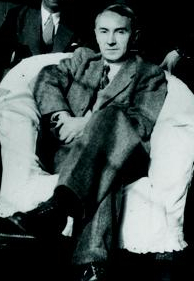
I would call Chevalley my guru
The first major lasting influence on me though was the course by Laurent Schwartz on Complex Manifolds, which covered topics like Hodge theory, Kähler manifolds, and Stein manifolds. His lectures were inspiring and began to seriously turn me away from number theory (the fact that my own relationship with KGR was becoming a difficult one might have also been a factor). Sometime later, Oscar Zariski visited TIFR for a month. Listening to his lectures, I again felt like putting aside everything I was doing, and just following him.
This is regarding the French influence on your academic life. Who actually suggested to you that you go to France? Why was France on the radar, or were there options too? Why not Germany or Russia too, because India was already independent then, and had strong relationships with these countries?
CSS: The visit of Laurent Schwartz in 1955 was the turning point for the French influence in TIFR. He was then already a Fields Medalist, and presumably talked to Henri Cartan, the doyen of French mathematics in Paris, and perhaps spoke to him highly of TIFR and its students. I think this paved the way for some of us to study in France. France has an uninterrupted tradition for excellence in mathematics. The period soon after the Second World War witnessed one of the great heights of this tradition. To mention some of the outstanding mathematicians: André Weil (though he was at the Institute for Advanced study in Princeton, he would spend summers in Paris), Henri Cartan, Jean Leray, Claude Chevalley, Laurent Schwartz, the young star Jean-Pierre Serre, and Alexander Grothendieck who was just then beginning to do his revolutionary work in algebraic geometry.
Actually, the very first time that we heard of Grothendieck, was from Laurent Schwartz himself. Grothendieck had been his student and did fundamental work in topological vector spaces. Schwartz told us us how Grothendieck narrated his proof of the Riemann–Roch theorem to Friedrich Hirzebruch.
In 1956–57, I managed to write up my thesis. It was a collection of ideas or rather remarks, that I had by listening to and understanding the works of many mathematicians, particularly Laurent Schwartz and the work of Weil that I have been mentioning. In 1956, R.C. Gunning from Princeton University visited TIFR for the international conference on Zeta functions. He told me that Grothendieck had succeeded in classifying vector bundles on the Riemann sphere, but didn’t mention the precise result. Then I found a proof based on the work of G.D. Birkhoff. I included this in my thesis. The first draft seems to have been read by Henri Cartan, who presumably suggested to KC to send me to Paris.
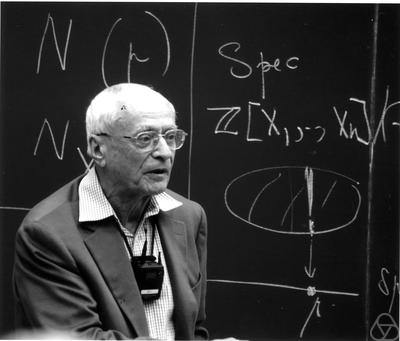
Apart from Chevalley, Serre was the person from whom I benefited the most
Was KC your thesis advisor, formally?
CSS: Yes. If my memory is correct Venugopal Rao’s thesis was the first one, and mine the second in mathematics, of the Bombay University. There was no department of mathematics in Bombay University at that time, but only in statistics.
How was life in France? There was a new language, the food was different, and the culture was different. How did you transition?
CSS: I was in admiration of European culture and French mathematics. At home back in India we are vegetarians, but we adjusted soon. In fact, I began loving French food. As for the language, I still remember that when we landed in Paris, Charles Ehresmann (who had earlier visited us in TIFR) received us at the airport along with his student Jean Benabou, and then we all went to a cafe. There they talked with others in French and we couldn’t follow a thing, in spite of our having studied at the Alliance Française, Bombay. So we went to the Alliance Française, Paris to study French again.
And over a period of time you picked up French.
CSS: Yes, but it didn’t take too long a time. In fact, my French improved to the extent that I could read the Le Monde, the daily newspaper, generally considered not an easy read.
I want to mention the obvious influence of Claude Chevalley here. What was the role that he played in your own mathematical upbringing, and were there other people too?
CSS: Ah, Chevalley. During the first year of my stay in Paris, Chevalley gave a long introductory course in algebraic geometry. I followed it thoroughly and meticulously. In the very next year, the Chevalley seminar was on the construction of the Picard variety, say of a normal variety. I was chosen as one of the speakers. I gave many talks based on the notes of Chevalley. Towards the end of that year, he posed me the problem of the construction of the Picard variety of a non-normal complete variety, based on the notion of a Cartier divisor. I solved it during the summer of that year. He asked me to write up the solution, for the Chevalley seminar.
So you owe a lot to Claude Chevalley.
CSS: Yes, I would call him my guru. His was the definitive influence which made me take up algebraic geometry. I had even been to his house several times when he would give me his papers for lecturing in his seminar, and to discuss mathematics as well. He was a very nice person. I have even published a note on “My Apprenticeship with Chevalley”.
The time you spent in France, from 1957 to 1960 was also the famed Bourbaki era. What was its influence on mathematics broadly, and in what sense did it influence the ethos of the School of Maths at TIFR much later?
CSS: We were certainly influenced by Bourbaki, just as were many mathematicians round the world. To give an example: When Samuel Eilenberg visited TIFR, he defined the tensor product by a universal property. These are pretty standard now, but in those days it was exciting to hear this point of view. The important point is that the Bourbaki comprised of many outstanding mathematicians. They not only had a new point of view, but were also extremely competent mathematicians in themselves.
Jean-Pierre Serre has always been a part of the Bourbaki. Tell us about your interactions with him during those three years and also much later.
CSS: Yes, Jean-Pierre Serre, apart from Chevalley, was the person from whom I benefited the most. I had looked at Serre’s paper FAC [Faisceaux Algebriques Coherents],2 where he had said that he didn’t know whether a projective module of finite type, over a polynomial ring in a finite number of variables over a field, was free. This was inspired by the analogy that a topological vector bundle on the affine space is trivial.

I asked Cartan about this question, and he told me that it was not known even for two variables. I thought almost continuously on this problem for several days and fortunately I could solve it for two variables. Those days Serre used to visit the Institute for Advanced Study, Princeton during the first semester and be back during Christmas to give his lectures starting January. Soon after his return, I met him for the first time. I told him about what I had done. He said that the proof was okay, but also that he had a feeling that it would work for any number of variables. He still asked me to go ahead and write up my proof. After a few days he again met me, this time to tell me that the proof indeed does not work for general n. The published proof follows Serre’s suggestions.
In my work on Picard varieties, I have benefited from Serre’s insights at some crucial junctures. Serre had used Cartier operators to prove the existence of Albanese varieties. Inspired by this, I proved the existence of Picard varieties in the sense of Chevalley (a notion which is weaker than the present one), by using Cartier operators. Serre made another decisive remark here. I had then learnt of the notion of Generalized Jacobians à la Maxwell Rosenlicht, from Serre’s book. Serre had proved that the Generalized Jacobians were indeed Picard varieties of non-normal complete curves. He exhorted me by saying “Look at that case”. Following which, I could eventually prove the problem that Chevalley had posed to me.
When you were in France, which university were you affiliated to?
CSS: The University of Paris, Sorbonne. But all seminars were held either at the Institut Henri Poincaré, where the mathematics library also was located, or at the Ecole Normale Supérieure where the Cartan seminars were held. The Cartan seminar was a unique event with the participation of excellent mathematicians not only from France, but other countries as well. I still remember the first Cartan Seminar that I attended.
All the greats were there–-André Weil, Harish-Chandra, Chevalley, Grothendieck and, of course Henri Cartan. And the topic for that day was Automorphic functions. First, Roger Godement lectured, and later Goro Shimura followed up. It was fantastic.
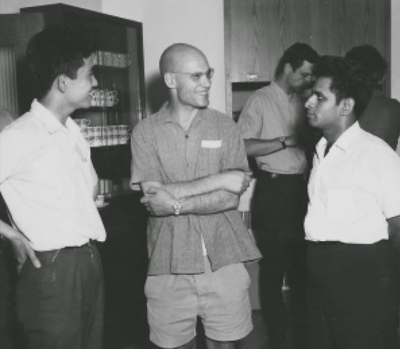
Was the IHES [Institut des Hautes Études Scientifiques] already there?
CSS: IHES started off in 1960. I gave a talk there following the notes by Grothendieck. Initially it was located in a building near the Arc de Triomphe, and a few years later moved to a new building.
In 1960, you returned to India, and then you got married. Your mathematical life also really took off in this period. What was this period between 1960 and ‘65 like?
CSS: I wrote a paper in 1963 in Mathematische Annalen, on quotient spaces modulo actions of algebraic groups. Under some conditions, I showed that these quotients can be identified with quotient spaces under a finite group (these may not exist as varieties, as was known). I then showed that the quotient by an Abelian variety always exists. An interesting point about this paper is its Appendix, authored by C.P. Ramanujam, where he proves what is now called the Ramanujam–Samuel theorem. I proved a somewhat weaker version of this theorem by a global method, using Picard varieties (as I had learnt it in the Chevalley seminar).
Then the real thing started: the work on moduli of vector bundles. M.S. Narasimhan and I proved the characterization of stable vector bundles (in the sense of Mumford) as irreducible unitary vector bundles, i.e. defined by irreducible unitary representation of the fundamental group (of a curve). I followed this idea up with another paper, stating that on the set of semi-stable bundles or rank n, say of degree zero and under a certain equivalence relation, there is a natural structure of a projective variety. I had ideas also on “parabolic vector bundles” in this period, but published them only much later. I also then got deeply interested in the so-called Geometric Invariant Theory or GIT, as it was the tool to solve moduli problems in all characteristics. Later I had partial success in solving what is called Mumford’s conjecture, and though not fully successful, led to a new criterion for ampleness.
Those were very fruitful years in my mathematical life. My family life with Sundari went off well, but then there was a traumatic experience. Our first son died when he was just an year and four months old.
You had a major work with M.S. Narasimhan on vector bundles.3 How did this actually happen? How long did it take for the two of you to prove it in the form in which we know it today?
CSS: I think that it started around 1962 or 1963. The first result was that irreducible unitary representations, say of rank n, of the fundamental group of a compact Riemann surface (or equivalently, a smooth projective curve), was a complex manifold with dimension equal to the “expected dimension” of the moduli space of simple bundles (i.e. with trivial automorphism group). Then we were wondering whether simple vector bundles are characterized as irreducible unitary bundles.
At that time we had heard of David Mumford and his definition of stable bundles. I then wrote to ask him whether stable bundles are just simple bundles. He immediately replied that this was not the case, and also sent us his first version of the book titled Geometric Invariant Theory. We also came to know of his ICM 1962 talk at Stockholm. I then felt, “Ah, this really is something.” Then we tried to prove that stable vector bundles are irreducible unitary. We realized that the crucial point was to examine whether in a family of vector bundles, the stable bundles formed a Zariski open subset of the family. This was clear in the rank two case. However for rank greater than or equal to 3, even for degree zero, it seemed that one had to deal with vector bundles of non-zero degree. It was at this juncture that André Weil’s work helped us. One was led to formulate a more general result that stable bundles of non-zero degree were parametrized by certain irreducible unitary representations of Fuchsian groups. With this consideration we proved our theorem.
In 1968, TIFR Mumbai hosted a major conference in algebraic geometry and the people who were invited there either to participate or to speak, looks like a who’s who of the world’s mathematical community. All the leading lights of mathematics, especially from algebraic geometry were there. Your reflections on that event.
CSS: Many leading algebraic geometers were present: André Weil (who was in India after a lapse of more than 30 years), Alexander Grothendieck, David Mumford, Michael Artin, Phillip Griffiths, Jun-Ichi Igusa, Teruhisa Matsusaka, and Shreeram Abhyankar were all present. Grothendieck took a strong personal interest in organizing it. It was indeed a great conference.
Was Pierre Deligne also there?
CSS: Deligne was just about 21 years old then, and probably still doing military service. He still had not published any paper (if my memory is correct). But Grothendieck personally told me that he was going to be a star.
Shortly after that in 1970 at the International Congress of Mathematicians held at Nice in France, four Indian mathematicians spoke, possibly for the first time in the history of Indian mathematics.
CSS: Yes, apart from me, M.S. Narasimhan, M.S. Raghunathan, and Raghavan Narasimhan.
What did this experience mean to all of you?
CSS: This meant that TIFR was recognized as a centre of excellence, by the international mathematical community. Of course, it was also a unique honour and we were all very pleased, no question about that.
We will now talk a bit about you transitioning from your role as a student to an independent researcher, and going on to become a professor who could guide and mentor his own students. Who were your first students?
CSS: I had the good fortune to have Pavaman Murthy as my first student. This happened in 1960, soon after my return from Paris. I didn’t pose any problem to him, in line with the tradition those days. Those days students were encouraged to pick their own problems. In that spirit I just asked him to read up Serre’s course on commutative algebra and intersection theory, and then lecture to me. I just sat down and simply listened to him. He (along with Jacob Towber) made the first breakthrough in the so called Serre’s problem for n \ge 3, showing that it is true for n =3 as well. Soon after this, the problem was solved in the affirmative by Dan Quillen and Andrei Suslin for all n.
The other students who have had a successful mathematical career are Madhav Nori, Chitikila Musili (unfortunately no more now), V. Lakshmibai, V. Balaji, N. Raghavendra, P. Vanchinathan and Senthamarai Kannan. Except for the last four, all the others are in the US. Madhav Nori who works at the University of Chicago is now regarded as being among the finest mathematicians in the world, and it is gratifying for me to remember that a question I posed to him about “finite vector bundles” was not only solved by him, but led him further to build up a Tannakian theory. With Balaji and Lakshmibai, I have had a long collaboration which still continues. Balaji was my first student when I moved to Chennai. If I am not mistaken I have had twelve students. They all wrote good theses. However, apart from those I have mentioned above, the rest have quit mathematics for a variety of reasons.
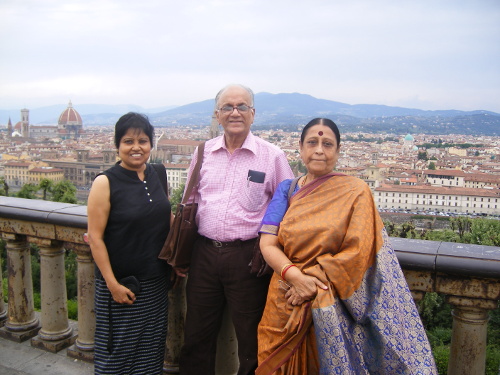
CSS: I would like to also talk about Peter Littelmann here, who was not formally my own student, but in whose progress I have played a role. I was in Brandeis for the year 1983–84. Peter was also there as a student at that time. I gave a course of lectures on Standard Monomials. There were a number of students during the first lecture. Very soon it dwindled to two: Peter Littelmann and another German student. And even pretty sooner, to only one: Peter Littelmann. However, it was a real pleasure to teach him. He made a major breakthrough much later, making SMT (Standard Monomial Theory) valid for any semi-simple algebraic group, and establishing connections with Masaki Kashiwara’s work, and to Quantum Group theory. In particular, he proved Lakshmibai’s conjectures for a general SMT.
Is it correct to say that David Mumford’s work on Invariant Theory has had an influence on your own work in Standard Monomial Theory?
CSS: Standard Monomial Theory was not inspired by the work of Mumford. It was a new interest for me, and actually goes back to the work of W.V.D. Hodge. The problem is to find canonical bases of finite irreducible G-modules, or more generally, find canonical bases of the coordinate rings of the so-called Schubert varieties, using the combinatorics of the Weyl group. With the help of my students, Musili and especially Lakshmibai, I could solve this problem for all classical groups. Lakshmibai made a conjecture for a SMT for any semi-simple algebraic group.
Why did you move from Mumbai to Chennai?
CSS: Not for music, as some people thought. It was for a purely personal reason. I got a lien from TIFR to come to the Institute of Mathematical Sciences (IMSc).
On an earlier occasion right here in CMI, and while speaking on the eightieth birthday celebrations of your friend and colleague Prof. R. Sridharan, you had mentioned that on one of your visits to Harvard, you had seen Raoul Bott giving an undergraduate course on analysis, and that this incident had left you very disturbed. And that it compelled you to ask yourself what it was that we were all doing here in India.
CSS: True. An outstanding mathematician like Raoul Bott was teaching undergraduate students. I just felt that we were simply a highly pampered lot in India. This was also the beginning of my intellectual disappointment regarding building up higher educational institutions that focused purely on research, and which neglected both teaching and scholarship. You see, Raoul Bott used to say that what you really require as a student is one good course on differential calculus.
Did you actually foresee the interfaces between physics, computer science and mathematics, such as those seen in quantum computing today, when you decided that CMI will offer a broad spectrum of courses for undergraduates?
CSS: To be frank, I didn’t foresee what you are mentioning. For me, CMI should be devoted to research and teaching, in areas closely related to mathematics. And gradually evolve to a university type of an institution, with humanities courses on offer as well.
Fortunately for us, P.S. Thiagarajan, an excellent theoretical computer scientist, joined CMI (and in fact earlier was with IMSc, when I was there). He began building up computer science at CMI, as well as at IMSc. Teaching mathematics and computer science together was also of particular value in attracting students for mathematics. Physics was added much later, as over the centuries it has remained the closest to mathematics. In some parts of physics like string theory, the level of mathematics used is really amazing. A great example for this is what is called the Verlinde formula in string theory. This is essentially a result in algebraic geometry surprisingly close to our own interests in the “moduli of vector bundles”; except that the “string theorists” were bold enough to perceive such results and prove them in their own way.
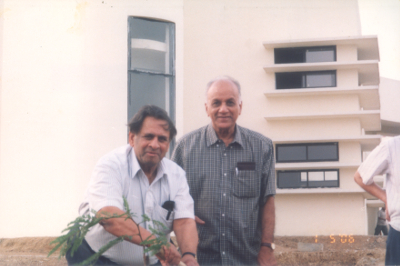
Fields of knowledge are merging today like never before, and the old traditional boundaries are blurring. New connections have come up in completely unexpected places. All this poses the need for an undergraduate education which provides a basic broad-based theoretical minimum, and exposure to applications. In fact I am of the belief that even in science education, there is a definite place for the humanities–-like music, literature, history. David Mumford, an outstanding algebraic geometer, is now an applied mathematician working in computer vision and neuroscience. He has even conducted a seminar at CMI on the history of mathematics in India. In any top university, you will of course have to have people working in the core areas of the subject; but simultaneously we will also need persons interested in applications, and who possess an enlightened view of the frontiers of mathematics.
In 2009, you were awarded the Padma Bhushan. In 1988 you were elected and awarded the Fellowship of the Royal Society. When these honours came your way, how did you feel?
CSS: I was certainly happy in getting these awards. When I got the FRS, I was having a very difficult time with George Sudarshan, and this award gave me a kind of solace. I am now also a Foreign Fellow of the National Academy of Sciences of the USA. I also received an Honorary Doctorate from the University of Paris, and the thing about it which pleased me the most was that Serre was there in the awards ceremony, and when he and I sat there together, it seemed as though it was just yesterday that we had met !
Of course, all awards are special and cherished, but the ones that come from one’s own peer group have special import, because these are given by people who understand and value your work.
Talking about the FRS, I think you were actually the third Indian mathematician to receive this honour after Srinivasa Ramanujan and Harish-Chandra.
CSS: No, I was the fourth Indian to receive this honour and the statistician C.R. Rao got it before me. Probably one does not consider statistics as part of mathematics, but I differ.
Thank you very much, Professor Seshadri, and it’s been a pleasure and a privilege talking to you.
acknowledgement Bhāvanā would like to acknowledge Rajeshwari Nair, Sripathy Saminathan, and CMI, Chennai, where this interview was held.
We also thank R. Mohan for the sketch of Professor Seshadri on the first page of this article.
Footnotes
- Otto Schreier, Emanuel Sperner. Introduction to Modern Algebra and Matrix Theory. Volume 1. 1951. Chelsea Publishing Company. ↩
- Jean-Pierre Serre. Faisceaux Algebriques Coherents. Annals of Mathematics. Second Series. Mar 1955. 61(2): 197–278. ↩
- M.S. Narasimhan, C.S. Seshadri. Stable and Unitary Vector Bundles on a Compact Riemann Surface. Annals of Mathematics. 1965. 82 (3): 540–567. ↩
